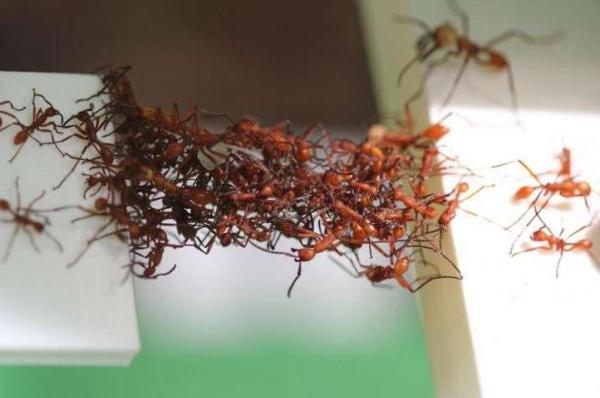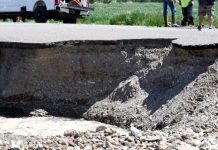SYDNEY, Nov. 23 (UPI) ─ Ants are capable of linking together their living, breathing bodies to form a sort of bio-bridge.
Researchers at the University of Sydney, in Australia, recently filmed ants bridging gaps in their environment as a way to better understand the insects’ architectural talent.
The research, published in the journal PNAS, uncovered the innate algorithm that governs their bridge building decisions. The engineering ants are able to calculate the costs and benefits of a bridge’s position in real time, constantly manipulating the bridge’s route across gaps and dangerous objects until the right balance is reached.
“Indeed, after starting at intersections between twigs or lianas travelled by the ants, the bridges slowly move away from their starting point, creating shortcuts and progressively lengthening by addition of new workers, before stopping, suspended in mid-air,” Christopher Reid, a postdoctoral researcher at Sydney’s Insect Behaviour and Ecology Lab, said in a press release.
“In many cases, the ants could have created better shortcuts, but instead they ceased moving their bridges before achieving the shortest route possible,” Reid added.
The benefit of bridges is maximizing a colony’s route to natural resources ─ food, mainly, but also building supplies. The cost is manpower ─ the longer and more extensive the bridge, the fewer ants there are to go get and carry back the food or materials. A bridge takes on a more static nature once the right balance is achieved.
The bridge-forming ants can also tell when it’s time to disband by sensing the level of traffic scurrying across its route. When traffic slows to a trickle, it’s time to let go and move on.
Reid and his colleagues think the intelligence that governs the ants’ bridge building abilities could be applied in robotics programming. Increasingly, robotics engineers are looking to build not a single super-smart machine, but a system of robots that pool their intellect and work together to solve problems in real time.
“Artificial systems made of independent robots operating via the same principles as the army ants could build large-scale structures as needed,” Reid said. “Such swarms could accomplish remarkable tasks, such as creating bridges to navigate complex terrain, plugs to repair structural breaches, or supports to stabilize a failing structure.”
“These systems could also enable robots to operate in complex unpredictable settings, such as in natural disaster areas, where human presence is dangerous or problematic,” he concluded.






